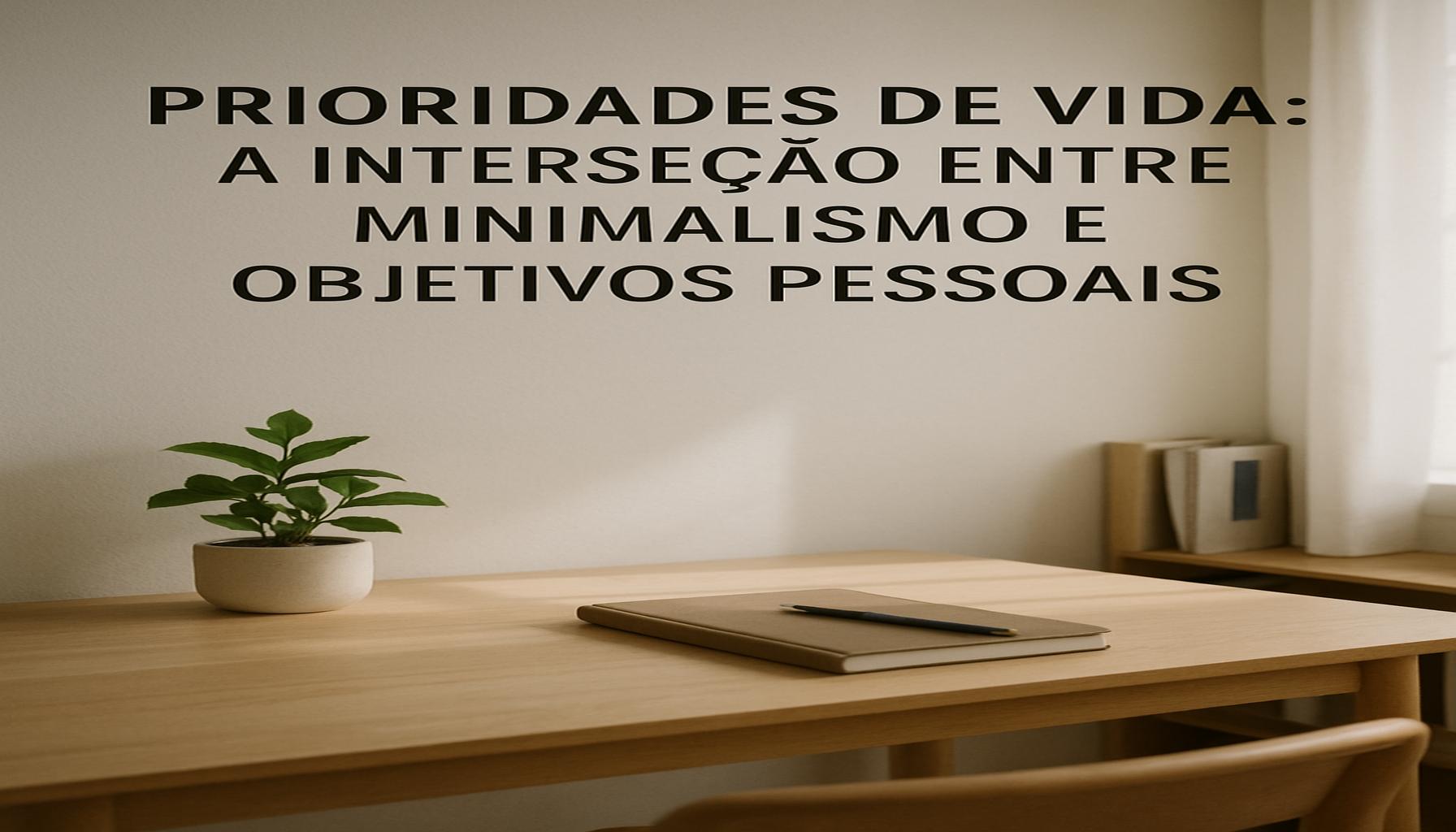How to Prioritize Tasks in a Minimalist Style: Techniques for a More Organized Life

Streamline Your Focus for Maximum Impact
In today’s fast-paced world, the ability to effectively prioritize tasks is essential for maintaining productivity and achieving your goals. As the volume of work and commitments continues to grow, individuals often find themselves grappling with overwhelming to-do lists. The minimalist approach to organization offers an elegant solution: by cutting through the clutter, it emphasizes what truly matters and allows you to focus on tasks that hold the most significance.
Consider these key aspects of minimalism in task management:
- Clarity: Narrowing your focus to a limited number of tasks not only reduces overwhelm but also enhances your ability to concentrate. Clarity comes from identifying the most critical tasks each day—this could mean selecting the top three to five priorities that will make a meaningful impact on your goals.
- Intentionality: Each task should resonate with your core values and career aspirations. This alignment ensures that you are not merely busy, but actively working on things that matter to you. For instance, if professional growth is a value, then tasks like networking or skill development should take precedence.
- Simplicity: Keeping your systems for tracking responsibilities straightforward encourages adherence and reduces procrastination. Whether you use a digital app or a traditional planner, opt for simple methods that facilitate easy updates and reviews.
By adopting minimalist techniques, you can cultivate a sense of calm and efficiency in your work life. Imagine starting each day with a clear vision of your priorities instead of a daunting list filled with distractions. The mental clarity gained from this approach can lead to increased satisfaction and better overall performance.
This article will delve into practical strategies for prioritizing tasks, including:
- The Eisenhower Matrix: A powerful tool that categorizes tasks based on urgency and importance, helping you decide what to focus on, delegate, or eliminate altogether.
- Time blocking: Allocating specific blocks of time for different tasks can increase your focus and ensure that you dedicate enough time to your priorities without the constant interruptions of multitasking.
- Setting daily intentions: Reflecting on what you want to achieve each day and writing it down can serve as a personal commitment to stay on track and focused on what’s important to you.
With the right techniques in place, you can cultivate a more organized life, allowing you to focus on what truly enhances your well-being and productivity. Are you ready to discover how minimalism can transform your approach to tasks? Embracing these principles could lead to a profound shift in how you navigate your daily responsibilities and ultimately lead to greater success and satisfaction!

DON’T MISS OUT: Click here to enhance your workspace organization
Unlocking Productivity with the Eisenhower Matrix
One of the most effective minimalist techniques you can adopt for prioritizing tasks is the Eisenhower Matrix. Named after former President Dwight D. Eisenhower, this method breaks tasks into four distinct categories based on their urgency and importance. By visualizing your tasks in this way, you can quickly identify which items require immediate attention and which can be scheduled for later or even eliminated altogether.
The Eisenhower Matrix comprises four quadrants:
- Urgent and Important: Tasks in this quadrant are critical to your immediate objectives and should be addressed right away. For instance, a looming project deadline or a critical client meeting falls into this category. Tackling these tasks first not only gives you a sense of accomplishment but also helps prevent last-minute stress.
- Important but Not Urgent: These tasks are vital for long-term success but don’t require immediate action. Examples include strategic planning, skill development, or building relationships. Scheduling time to focus on these areas ensures that you are making deliberate progress while preventing a last-minute rush later on.
- Urgent but Not Important: Tasks that are pressing but do not contribute significantly to your goals fit in this quadrant. Often, these tasks can be delegated to others or streamlined to minimize their impact on your day. For instance, responding to non-critical emails could be managed by an assistant or batched into specific times during the day.
- Not Urgent and Not Important: This quadrant often contains distractions and low-value tasks. These are activities that can consume time without offering substantial benefits, like excessive social media scrolling or trivial tasks. Identifying and eliminating these distractions can free up valuable time for more meaningful work.
Implementing the Eisenhower Matrix allows you to take a step back and view your responsibilities from a fresh perspective. This not only enhances decision-making but also equips you to filter out noise and focus on what genuinely drives your success. By organizing your tasks in this manner, you embrace a minimalist lifestyle that reduces overwhelm and fosters intentional productivity.
Time Blocking: Structuring Your Day for Success
Another revolutionary approach to prioritizing tasks is time blocking, a technique that ensures you dedicate specific periods to different activities throughout your day. By assigning time slots for tasks, you can dramatically improve your focus and efficiency. This method acts as a safeguard against distractions and helps maintain accountability.
To effectively implement time blocking, consider the following steps:
- Identify Your Priorities: Begin by laying out your most important tasks for the week ahead. Use the Eisenhower Matrix to pinpoint what’s both urgent and important.
- Divide Your Day: Block out your day into manageable intervals, assigning time for deep work, meetings, breaks, and even personal errands.
- Be Flexible: While it’s essential to adhere to your blocks, life can be unpredictable. Allow for adjustments to your schedule and try not to stress if things don’t go exactly as planned.
By utilizing time blocking, you cultivate a more organized life—a foundation upon which to build a more productive, minimalist approach to daily tasks. The discipline of sticking to your schedule empowers you to prioritize the right objectives effectively.
Effective Techniques for Prioritizing Tasks in a Minimalist Style
To fully embrace minimalism in task management, it’s crucial to implement techniques that streamline your to-do list and enhance your productivity. Here, we explore several effective methods that can revolutionize how you approach your daily responsibilities.
1. The Eisenhower Matrix
One of the most renowned techniques for prioritizing tasks is the Eisenhower Matrix, which categorizes your tasks into four quadrants based on urgency and importance. By distinguishing between what is urgent and what is important, you gain clarity on which tasks need immediate attention and which can be scheduled for later. This framework allows you to focus on high-impact activities while minimizing distractions from less critical tasks.
2. Time Blocking
Another powerful minimalist technique is time blocking. By allocating specific time slots for different tasks throughout your day, you create a structured routine that encourages focus and efficiency. This method not only helps to resist multitasking but also ensures that you dedicate sufficient time to priority tasks, nurturing a sense of accomplishment as you progress through your schedule.
3. The 80/20 Rule
Also known as the Pareto Principle, the 80/20 Rule suggests that 80% of your results come from 20% of your efforts. By identifying the top 20% of tasks that yield the most significant outcomes, you can prioritize those over less impactful activities. This technique promotes a minimalist mindset by encouraging you to eliminate or delegate lower-priority tasks that do not contribute substantially to your goals.
4. Daily Reviews
Incorporating a daily review session into your routine can significantly enhance your task prioritization. Spend a few minutes each day reflecting on your accomplishments and assessing what remains on your to-do list. This intentional reflection allows you to adjust your priorities based on changing deadlines and new responsibilities, ensuring you stay organized and focused on what truly matters.
5. Decluttering Your Task List
Minimalism extends beyond physical spaces; it also applies to your task list. Regularly declutter your to-do list by eliminating tasks that are no longer relevant or necessary. This practice of prioritizing the “must-dos” over the “should-dos” creates a clearer path to enhance productivity while reducing feelings of overwhelm.By integrating these techniques into your daily routine, you actively refine the art of prioritizing tasks in a minimalist style. Not only does this foster a more organized life, but it also significantly enhances your ability to focus on what truly matters, cultivating a sense of fulfillment and purpose.
DISCOVER MORE: Click here to learn how minimalism can change your life
Embracing the ‘One Thing’ Philosophy
Another impactful strategy for prioritizing tasks in a minimalist framework is the ‘One Thing’ philosophy, popularized by Gary Keller and Jay Papasan in their book “The One Thing.” This method encourages individuals to focus on the single most important task that will make everything else easier or unnecessary. By prioritizing one significant objective at a time, you can channel your energy and resources towards meaningful outcomes, thereby fostering a more organized life.
To effectively apply the ‘One Thing’ philosophy, follow these four steps:
- Ask the Right Question: Begin by asking yourself, “What is the one thing I can do such that by doing it everything else will be easier or unnecessary?” This question helps you clarify your priorities and focus on what truly matters.
- Block Distractions: Create a work environment that minimizes interruptions. This may involve turning off notifications on your devices, setting boundaries with colleagues, or establishing dedicated workspace for your important tasks.
- Set Specific Time Periods: Choose a specific time each day to dedicate solely to your ‘One Thing.’ This could be as little as 30 minutes, but consistency is key. The more regularly you commit to this practice, the more productive you’ll become.
- Review Your Progress: Reflect on your achievements regularly. Take time to celebrate your accomplishments, and adjust your focus if you find that your initial ‘One Thing’ has shifted due to changing circumstances.
The ‘One Thing’ philosophy resonates with minimalist ideals by promoting clarity and intentionality in your daily activities. By concentrating on a singular task, you harness your focus and drive, mitigating the feeling of being overwhelmed by the numerous items on your to-do list.
Implementing the 80/20 Rule: Maximizing Impact with Minimal Effort
The 80/20 Rule, also known as the Pareto Principle, suggests that 80% of your results stem from just 20% of your efforts. This concept is essential for creating a minimalist task prioritization strategy, as it helps you identify which tasks yield the greatest return on investment in terms of time and energy.
Here’s how to effectively integrate the 80/20 Rule into your daily routine:
- Identify Key Tasks: Review your current responsibilities and pinpoint the 20% of activities that contribute to the majority of your results. This could relate to client interactions, high-impact projects, or driving sales.
- Delegate or Automate: Once you have identified your key tasks, look for opportunities to delegate or automate the remaining 80%. This might involve hiring freelancers for administrative tasks or using software to manage scheduling and communication.
- Focus on Continuous Improvement: Regularly assess the effectiveness of your key tasks. As circumstances evolve, your focus may need to shift. Continually refine your approach to ensure that you’re working on the most impactful activities.
By applying the 80/20 Rule, you become intentional about your workload, allowing you to minimize clutter in both your tasks and your mind. This focused approach not only supports a minimalist lifestyle but also fosters growth and efficiency in your personal and professional pursuits.
DIVE DEEPER: Click here to uncover the secrets of minimalism
Conclusion: The Path to a More Organized Life
In an age inundated with distractions and an overwhelming wave of responsibilities, understanding how to prioritize tasks in a minimalist style is not just beneficial—it’s essential. By embracing techniques such as the ‘One Thing’ philosophy and the 80/20 Rule, you can streamline your focus and empower yourself to achieve significant progress with minimal effort. The essence of these strategies lies in clarity and intention, allowing you to sift through the noise and concentrate on what truly drives results.
As you implement these techniques into your daily routine, it becomes increasingly apparent that less is indeed more. By identifying the 20% of tasks that provide 80% of your outcomes, you can shift your attention from sheer volume to meaningful impact. This not only alleviates stress but also cultivates a sense of accomplishment as you begin to experience the fruits of your focused labor.
Moreover, embracing minimalism in your task management encourages a more profound reflection on your values and goals, paving the way for a life that is not only organized but also fulfilling. Consider this journey of prioritization as an opportunity to cultivate mindfulness in your daily practices. By continuously assessing, adjusting, and honing your focus on what matters most, you lay the groundwork for sustained success and personal growth.
Ultimately, the path to a more organized life is one of conscious choices—choosing to prioritize, to simplify, and to value your time. As you embark on this transformative journey, remember that organization is not just about clearing physical space; it is about creating mental and emotional clarity that fosters a more productive and satisfying existence.


